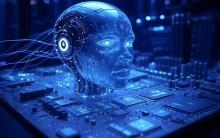
Neurological diseases cast a profound shadow over the lives of millions worldwide, greatly compromising their quality of life. Although current pharmaceutical and medical device interventions offer partial relief for certain aspects of these conditions, long-term efficacy often falls short. In this challenging landscape, Dr. Akshay Ananthakrishnan has emerged as a leading force in the field of neurotechnology, leveraging his multidisciplinary expertise to drive unprecedented advancements in biocompatible, power-efficient, and high-bandwidth solutions.
Dr. Akshay Ananthakrishnan, an alumnus of BITS, Pilani (Bachelor's) and University of Pennsylvania (Master's & Ph.D.), is a Staff Micro-Electro-Mechanical Systems (MEMS) and Sensor Engineer at iota Biosciences. He embarked on his transformative journey in neurotechnology eight years ago, recognizing the wide-ranging impact of neurological diseases and the pressing need for innovative approaches. Before his tenure at iota Biosciences, he served as a post-doctoral researcher at the Neuroelectronics group at the University of California, San Diego (UCSD). During this pivotal period, Dr. Ananthakrishnan spearheaded the development of a high-bandwidth neuromorphic chip capable of real-time processing of neural signals. The groundbreaking achievement came when his team demonstrated how programmable resistors constructed from transition metal oxides could faithfully replicate the mathematical operations performed by biological synapses. By adopting a gridded "crossbar" arrangement inspired by telephone exchange architectures, they showcased the immense potential of parallelized brain-machine interfaces in efficiently sorting neural activity while consuming minimal power.
One of the most critical challenges in neurotechnology revolves around the development of long-lasting implantable sensors. The human body often reacts to neural implants as foreign objects, triggering the disruptive "foreign-body response," rendering the sensors non-functional within weeks of implantation. Dr. Ananthakrishnan tackled this challenge during his Ph.D. research in the Microsensors and Microactuators (MSMA) group at the University of Pennsylvania. Through innovative engineering and implant design, he successfully developed biocompatible brain implants primarily composed of natural proteins. By seamlessly integrating these proteins into the batch-scale MEMS manufacturing workflow, he turned the concept of miniature implants with natural materials into a tangible reality.
Drawing inspiration from the intricate architecture and materials of biological neural networks, Dr. Ananthakrishnan blazed a trail in developing brain-like "neuromorphic" information processing circuits. He leveraged simple hardware primitives such as resistors and diodes to emulate the behavior of biological neurons and arranged them in a network configuration. Through an optimization process involving a quantized training algorithm, Dr. Ananthakrishnan achieved remarkable success in executing standard machine learning tasks using simple neuromorphic hardware, including digit detection from images. These breakthroughs hold promise for more efficient and powerful brain-inspired computation.
Furthermore, Dr. Ananthakrishnan recognized the advantageous nature of the brain's three-dimensional small-world architecture, known for its energy efficiency, local density, and complexity. A critical aspect of this architecture lies in the existence of sparse long-range connections, which pose challenges to current hardware-based approaches in brain-inspired computation. In response, Dr. Ananthakrishnan pioneered the development of the first programmable memory device capable of storing binary information in pure water. These liquid-based resistive devices not only replicate the fundamental functions of biological synapses but also lay the foundation for the realization of a wetware-based artificial brain on a chip, unlocking exciting possibilities in the field.
With visionaries like Dr. Akshay Ananthakrishnan pushing the boundaries of brain-machine interfaces, the future holds immense promise for disruptive growth and the widespread adoption of neurotechnologies. The innovative research and development conducted by Dr. Ananthakrishnan herald new horizons for brain-machine interfaces that are not only safe but also have the potential to significantly enhance the lives of individuals affected by neurological diseases. By bridging the gap between neuroscience, materials science, electrical engineering, MEMS, and machine learning, Dr. Ananthakrishnan exemplifies the power of multidisciplinary collaboration in tackling complex medical challenges and improving the well-being of millions.

















